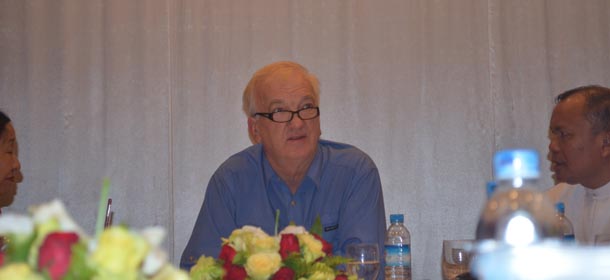RANGOON — Speaking at a press conference in Rangoon on Tuesday, David J. Cundall, the British aviation enthusiast who has spent years searching for World War II-era Spitfire fighter planes rumored to be buried in Burma, has denounced a former sponsor’s claims that there are no planes to be found.
“I’m saying that there are Spitfires. The people who say that [there aren’t] have never surveyed, they’ve never really done anything,” said Cundall.
Cundall, a farmer who has devoted 15 years to investigating claims that there are as many as 140 rare Spitfires buried in Burma, was responding to a statement released by Belarusian video gaming company Wargaming.net last Friday that said the planes were never even delivered to the country by Allied forces as the war drew to a close nearly 70 years ago.
“I told Wargaming it’ll be another month or five weeks before we actually dig up a Spitfire. But they couldn’t wait that long and they are out of the project,” said Cundall, adding that the search team still needs another two weeks to finish surveying the suspected burial sites.
A confident-sounding Cundall said that he expects to have some good news in about two or three weeks, when his team will have radar images that he thinks will show the shape of the Spitfires.
He also said that the decision by Wargaming.net to pull out of the project would not be a major setback.
“There’s no shortage of money, none at all,” said Cundall, who has used his own money and received backing from a variety of other investors, including his Burmese partner Shwe Taung Paw.
Cundall said that he conducted interviews with eight eyewitnesses who told him they saw the planes being buried in Burma. The planes are believed to be in Rangoon near the city’s international airport in Mingaladon Township, and in the Kachin State capital Myitkyina.
The Spitfire remains Britain’s most famous combat aircraft. Its reputation was cemented during the Battle of Britain, when the fast-moving single-seater aircraft helped beat back waves of German bombers.
Britain built a total of about 20,000 Spitfires, although the dawn of the jet age at the end of World War II meant that the propeller-driven planes quickly became obsolete.
















